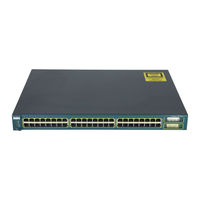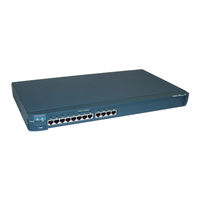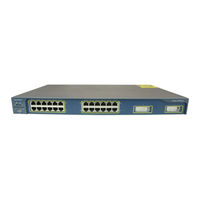Cisco 2950G 48 - Catalyst Switch - Stackable Manuals
Manuals and User Guides for Cisco 2950G 48 - Catalyst Switch - Stackable. We have 4 Cisco 2950G 48 - Catalyst Switch - Stackable manuals available for free PDF download: Software Manual, Hardware Installation Manual, Datasheet, Product Bulletin
Cisco 2950G 48 - Catalyst Switch - Stackable Software Manual (376 pages)
Desktop Switch Software Configuration Guide
Table of Contents
Advertisement
Cisco 2950G 48 - Catalyst Switch - Stackable Hardware Installation Manual (162 pages)
Catalyst 2900 Series XL Hardware Installation Guide
Table of Contents
Cisco 2950G 48 - Catalyst Switch - Stackable Datasheet (19 pages)
Catalyst 2950 Series Switches with Enhanced Image Software
Table of Contents
Advertisement
Cisco 2950G 48 - Catalyst Switch - Stackable Product Bulletin (3 pages)
for Cisco Catalyst 3550, 2950, 2950 LRE, 2940, and 2955 Series Switches and CIGESM Blade Switch



